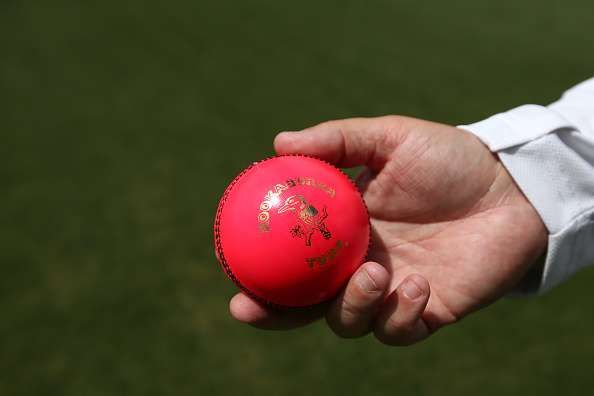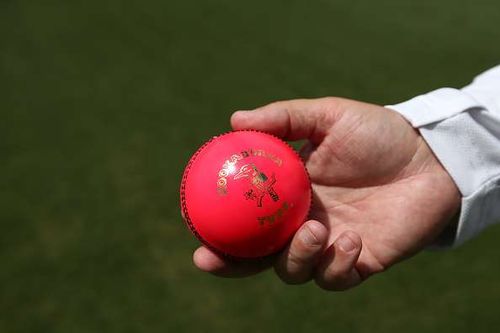
Just two tests old,the pink ball is already evolving

Nothing dictates the course of a cricket game than the ball which weighs around 5 ounces. The round thing over the years has been the focus point to the game’s evolution. Ground conditions, change of laws in the game have also demanded the change in cricket balls.
While the basics have remained the same, colour has changed. From red to white and now yellow and pink. While the yellow hasn’t been tested yet at the international level the pink—in its second Test is already quite a popular thing.
Reportedly, 16 shades of the colour pink were tested to come up with the finished product for the first ever day and night Test between New Zealand and Australia at Adelaide which was held from November 27,2015.
Also Read: Anil Kumble: Long way to go for pink ball Tests
Developed around 11 years back, Kookaburra had been under trial for the last 8 years so that the perfect ball could be used in the Adelaide Test match. So why was the colour pink, selected?
"So we looked at a number of different colours initially, colours like yellow and florescent orange were considered as being possible solutions to this challenge," Kookaburra managing director Brett Elliott told ABC last year.
"Some of the problems that were presented came primarily from the television networks, where the camera guys said it was too difficult to pick up the orange ball, or alternatively they got a streaming effect or a media effect from a camera perspective."
"We have gone through 16 different shades of pink and the construction of that has all changed as well, different cuts of leathers, base colours, different shades and pentanes of pink as well," Elliott said. He had also said that there were a number of stitching colours which were tried out on the ball.
First, it was a black then we went to a green and then to a white, then we reverted back to the green stitching," he said."This is really about the how the players pick up the stitches and pick up the seam, so it was feedback from the players initially that made us settle on the colour green."
Also Read: Red, White, and Pink Balls - The Difference
So green it was for the Adelaide Test in November last year, and what a debut it was for the ball. Crowds came in huge numbers to witness the historic change and they were not disappointed either.
The match itself was a closely fought contest, with Australia edging past their rivals by just three wickets.But what was noticeable was that the highest score in an inning was just 224 which Australia amassed in their first innings and the game only lasted three and half days.
Generally, on an Adelaide strip, one would expect a high-scoring game and the captains knew it too. After the game, both skippers said the ball was much different than what they thought it would be like. On the advice of Australian skipper, Steve Smith Kookaburra decided to change the seam colour believing that black would aid in its visibility.
"We have changed the colour of the seam since the Adelaide Test. After the Adelaide Test, where the ball had green and white seam, we spoke to (Australian captain) Steve Smith and he wanted a more visible seam. So, we introduced the black seam," Elliot said.
Black seam should support the spinners says Kookaburra MD
"The visibility is massive especially when it is played under lights. We have designed the seam to provide support to the spinners as well."
Unbelievably, there were no internationals held after that till 13th October this year. The game between Pakistan and West Indies is presently underway at the Dubai International Cricket stadium. The match has witnessed some records being shattered both with the ball and the willow.
Perhaps the new ‘black’ seam on the pink ball was actually easy to pick for the likes of Azhar Ali who smashed his way to an unbeaten 302—the first of it’s kind in the day-night Test format.
But then again Pakistan were bowled out for just 123 in their second innings as legspinner Devendra Bishoo ran through the batting order with figures of 8/49 from his 13.5 overs.What was heartening to see was unlike Adelaide the Test went into the fifth and the final day, a spark which the pink-ball perhaps needed.
Over the past year Kookaburra has tried to improve its quality with each passing game, and with every passing match, the ball is evolving fast. First, it was pink with a green and white seam now—just the second international--it has black stitching. Who knows what surprise awaits us by the time the third pink-ball Test is played.